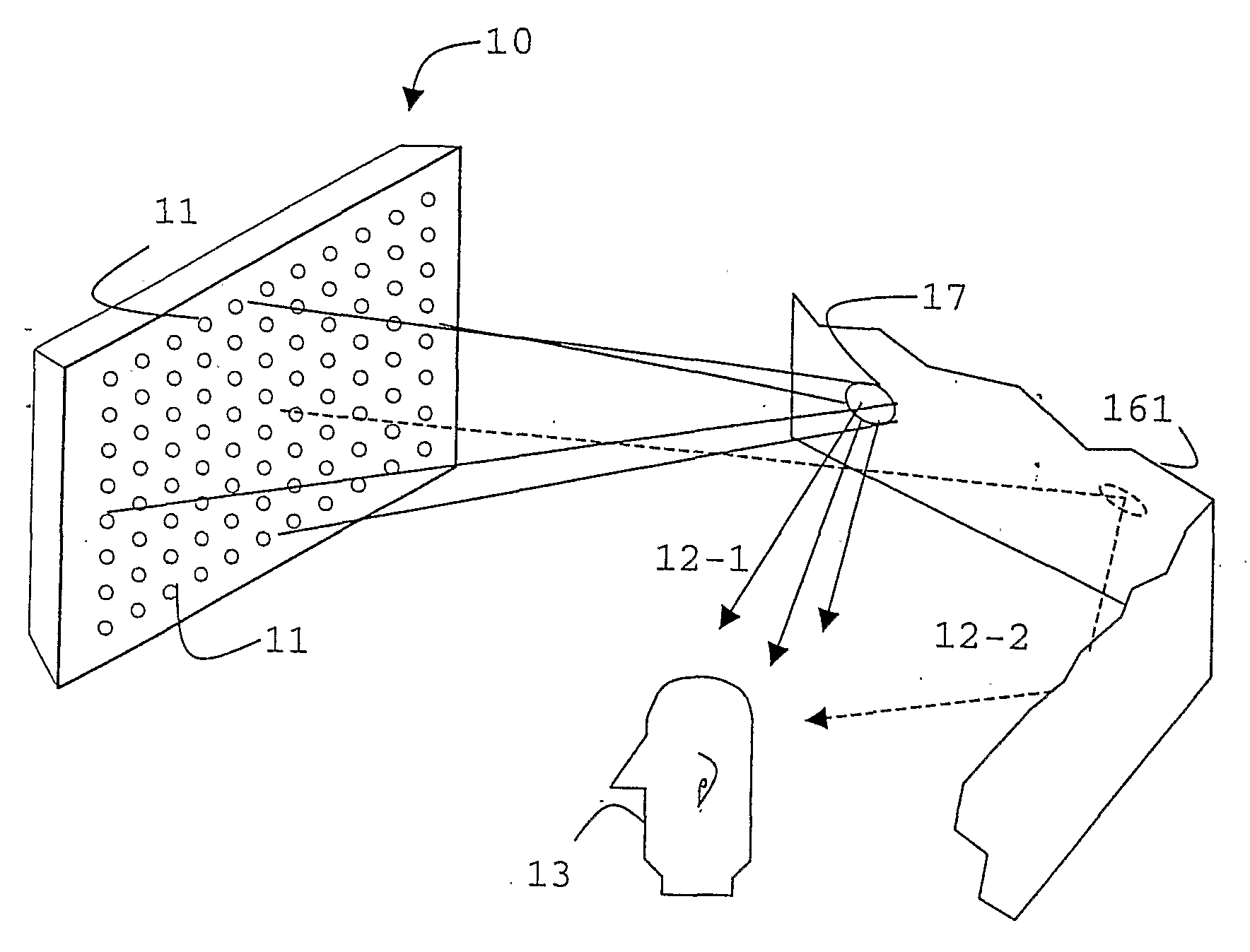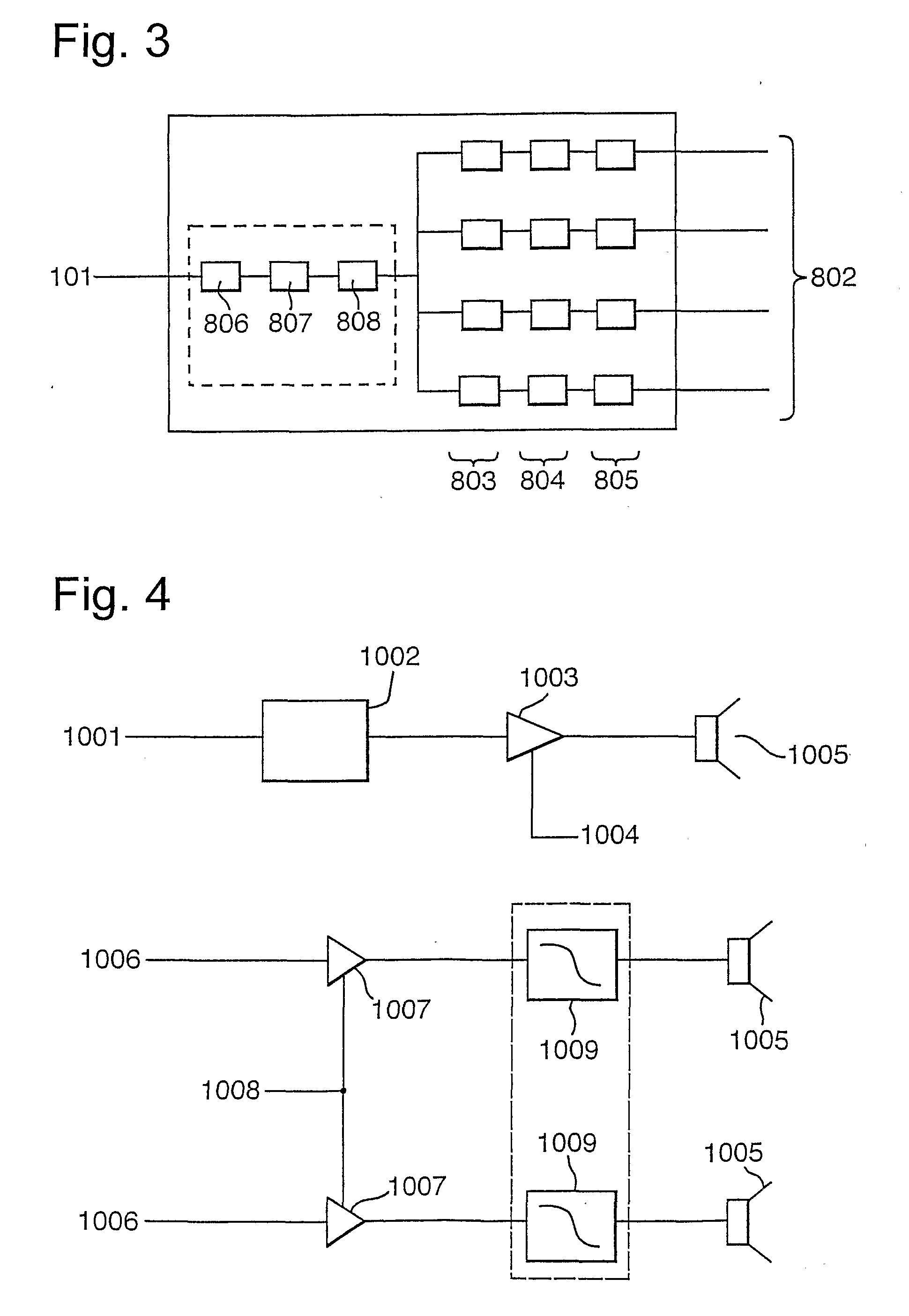Method and apparatus to create a sound field
a technology of sound field and acoustic antenna, which is applied in the direction of sound producing devices, color television, television systems, etc., can solve the problem of not being able to reproduce the whole signal to be outpu
- Summary
- Abstract
- Description
- Claims
- Application Information
AI Technical Summary
Benefits of technology
Problems solved by technology
Method used
Image
Examples
Embodiment Construction
[0266]The description and Figures provided hereinafter necessarily describe the invention using block diagrams, with each block representing a hardware component or a signal processing step. The invention could, in principle, be realised by building separate physical components to perform each step, and interconnecting them as shown. Several of the steps could be implemented using dedicated or programmable integrated circuits, possibly combining several steps in one circuit. It will be understood that in practice it is likely to be most convenient to perform several of the signal processing steps in software, using Digital Signal Processors (DSPs) or general purpose microprocessors. Sequences of steps could then be performed by separate processors or by separate software routines sharing a microprocessor, or be combined into a single routine to improve efficiency.
[0267]The Figures generally only show audio signal paths; clock and control connections are omitted for clarity unless ne...
PUM
 Login to View More
Login to View More Abstract
Description
Claims
Application Information
 Login to View More
Login to View More - R&D
- Intellectual Property
- Life Sciences
- Materials
- Tech Scout
- Unparalleled Data Quality
- Higher Quality Content
- 60% Fewer Hallucinations
Browse by: Latest US Patents, China's latest patents, Technical Efficacy Thesaurus, Application Domain, Technology Topic, Popular Technical Reports.
© 2025 PatSnap. All rights reserved.Legal|Privacy policy|Modern Slavery Act Transparency Statement|Sitemap|About US| Contact US: help@patsnap.com



